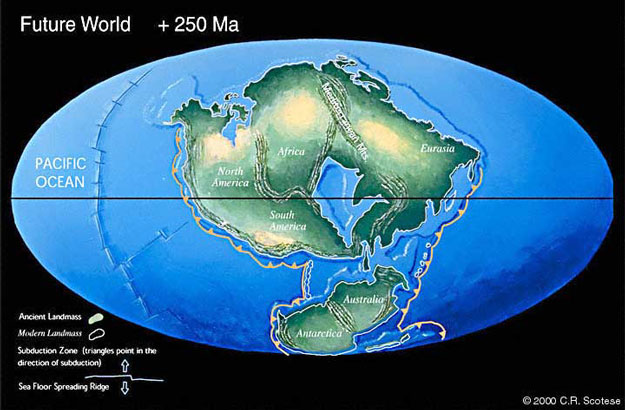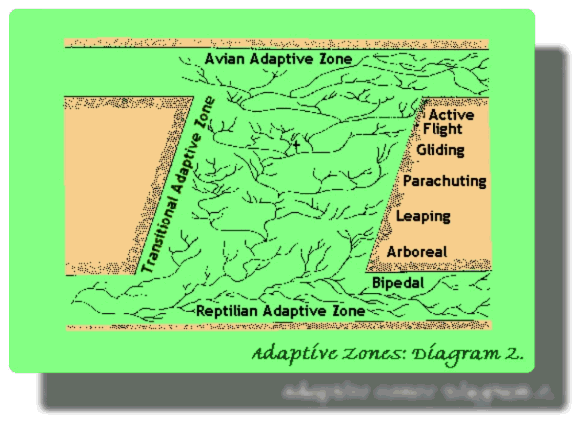
2.asteroid: Rocky, metallic body, a few to 1,000 kilometers across, hurtling through space.

3.comparative morphology: Scientific study of comparable body parts of adults or embryonic stages of major lineages.
4.derived trait: A novel feature that evolved but once and is shared only by the descendants of the ancestral species in which it evolved.

5.fossil: Recognizable, physical evidence of an organism that lived in the distant past.

6.fossilization: How fossils form. An organism or evidence of it gets buried in sediments or volcanic ash; water and dissolved inorganic compounds infiltrate it; then chemical changes and pressure from accumulating sediments above transform it to stony hardness.

7.geologic time scale: Time scale for the Earth's history with major subdivisions corresponding to mass extinctions. Now radiometrically dated.

8.Gondwana: Paleozoic supercontinent; with other land masses, it formed Pangea.

9.half-life: The time it takes for half of a given quantity of any radioisotope to decay into a different, and less unstable, daughter isotope.
10.homologous structure: Of separate lineages, comparable body parts that show underlying similarity even when they may differ in size, shape, or function; outcome of morphological divergence from a shared ancestor.
11.lineage: Line of descent.

12.morphological convergence: Macroevolutionary pattern. In response to similar environmental pressures over time, evolutionarily distant lineages evolve in similar ways and end up being alike in appearance, functions, or both.

13.morphological divergence: Macroevolutionary pattern; genetically diverging lineages undergo change from body form of a common ancestor.

14.Pangea: Paleozoic supercontinent upon which the first terrestrial plants and animals evolved.

15.plate tectonics theory: Theory that great slabs (plates) of the Earth's outer layer float on a hot, plastic mantle. All plates are slowly moving and have rafted continents to new positions over time.

16.stratification: Stacked layers of sedimentary rock, built up by gradual deposition of volcanic ash, silt, and other materials over time.

17.theory of uniformity: Early theory that the earth's surface changes in gradual, uniformly repetitive ways (major floods, earthquakes, and other infrequent catastrophes also occur every year and were not considered unusual). Has since been replaced by plate tectonics theory.

18.adaptive radiation: Macroevolutionary pattern; burst of genetic divergences from a lineage that gives rise to many species, each using a novel resource or a new (or newly vacated) habitat.

19.adaptive zone: Minimum amount of energy required to get a specific reaction going, with or without the help of an enzyme. Reactions differ in the amount required.

No hay comentarios:
Publicar un comentario